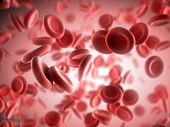Symptoms of HIV AIDS positive infection in men and women – A person infected with HIV is not likely to have any symptoms for about 3-10 years. This period may be longer if the natural defense mechanism of the body is good. Although a person infected with HIV does not have any symptoms, he can spread the infection to others.
Symptoms of HIV AIDS infection !
It is recommended that anyone who has sex with a partner who is not in mutually faithful relationship should practice safe sex. This means using a condom correctly for every sexual act. Men and women with HIV infection do not develop persistent severe symptoms for up to 10 years after the virus first enters the body.
Children born with HIV infection may however develop the symptoms within two years. The symptoms appear because of the gradually diminishing defense mechanism of the body.
This is the stage when AIDS develop. Most of the symptoms of AIDS are due to opportunistic infections that take advantage of the body’s poor defense mechanism.
Opportunistic infections are those infections that may not cause disease in a person with normal defense mechanism.
The symptoms of HIV AIDS are divided into major and minor symptoms.
As per the definition of AIDS given by World Health Organization, a person is said to have AIDS if he has at least two major signs and at least one minor sign and there is no other cause of poor immune mechanism.
The term “AIDS related illness” is used when a person has some of the signs and symptoms, has antibodies to HIV in the blood but does not have two major signs and one minor sign.
Detailed below are the major and minor signs and symptoms of HIV AIDS positive infection:
Major symptoms of HIV AIDS:
Diarrhoea is very common in people with AIDS. It is normally clear and watery and may be associated with cramp-pain in the abdomen and vomiting.
Chronic diarrhoea with excessive loss of weight is one of the important features of AIDS. There may also be continuous fever and increased sweating at night.
Minor symptoms of HIV AIDS:
include chronic cough that does not respond to routine treatment, enlargement of the lymph nodes, fungal infection of mouth called candidiasis, recurrent infection of herpes group of viruses.
Enlargement of the lymph nodes:
Lymph nodes are essential for maintaining the body’s normal defense mechanism. They are located in groups in various parts of the body such as armpits, neck and groin.
Enlarged and painless lymph nodes in various parts of the body is one of the early signs of AIDS. It is important to remember that any infection can cause enlarged lymph nodes.
Normally, only those lymph nodes located near the affected part of the body are enlarged. In case of an infection that affects the entire body, lymph nodes all over the body get enlarged.
Fungal infection of mouth:
One of the common symptoms of HIV AIDS is an infection in the mouth called candidiasis. This is due to a yeast called candida. Candidiasis results in a thick white like coating on the tongue and roof of the mouth.
It can also cause dry mouth, difficulty in swallowing, and an altered sense of taste. This infection is not common among people with normal defense mechanism because their body is able to fight the infection successfully.
Candidiasis may also be present in old people with poor defense mechanism, sick children and babies who are fed by bottles. It can also affect the vagina in women.
Candidiasis in people with AIDS can also spread to the lungs and the digestive tract.
Fungal infection of the lungs:
Pneumocytis carnii pneumonia is a fungal infection of the lungs the results in symptoms similar to pneumonia due to bacterial infection. It results in persistent dry cough and death can occur when it spreads to other parts of the body.
Infection due to herpes virus:
Herpes simplex and herpes zoster are two common viral infections in people with AIDS. Herpes simplex can affect anyone, but it is more severe in people with AIDS.
It produces small blisters filled with fluids that may be painful. These sores occur more often inside and around the mouth, genital area or the area around the anus.
The sores of herpes simplex in people with normal defense mechanism, lasts for about 2-3 days and are few in number. They last longer and are more in number in people with AIDS.
Herpes zoster is also a viral infection that starts as a painful rash with blisters. These rashes are common on the face, trunk and limbs. If they affect the eyes, pain and blurring of vision may occur.
Herpes zoster is normally seen in old people who have poor defense mechanism. In recent years, it has become more common in teenagers people with AIDS.
RELATED TOPICS
Health insurance companies in UK


